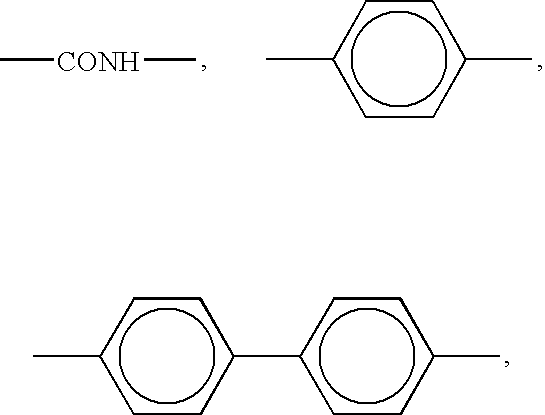Photosensitive metal nanoparticle and method of forming conductive pattern using the same
a metal nanoparticle and conductive pattern technology, applied in the field of photosensitive metal nanoparticles and methods of forming conductive patterns, can solve the problems of difficult to prepare metal nanoparticle films or patterns in a large size, difficult to control and arrange such fine particles efficiently, and difficult to overcom
- Summary
- Abstract
- Description
- Claims
- Application Information
AI Technical Summary
Benefits of technology
Problems solved by technology
Method used
Image
Examples
example 1
Introduction of Photosensitive Group to Surface of Gold Nanoparticles
[0053]0.2 g of the gold nanoparticles prepared in Preparative Example 1 was dispersed in 5 g of cystamine dihydrochloride, and stirred by use of a magnetic bar for 2 hours, filtered, and then washed with pure water and filtered, to obtain gold nanoparticles each having a surface substituted with amine groups. While the pH being maintained at 7.2–7.4 in a buffer solution of 0.05 M 4-(2-hydroxyethyl)-1-piperrazineethanesulfonic acid (HEPES), the gold nanoparticles were reacted with acrylic acid (0.01 M) for 4 hours, in the presence of 1-ethyl-3(3-dimethylaminopropyl)carbodiimide (EDC) as a condensation reaction agent. After the completion of the reaction, resulting metal nanoparticles were filtered, washed twice with THF, and dried under a reduced pressure, to yield photosensitive metal nanoparticles having acryl moieties connected through an amide group on the surface thereof.
example 2
Introduction of Photosensitive Group to Surface of Silver Nanoparticles
[0054]Silver nanoparticles having acryl moieties connected through an amide group on the surface thereof were obtained in the same manner as in Example 1, with the exception that 0.2 g of the silver nanoparticles prepared in Preparative Example 2 was used, instead of the gold nanoparticles.
example 3
Introduction of Photosensitive Group to Surface of Copper Nanoparticles
[0055]Copper nanoparticles having acryl moieties connected through an amide group on the surface thereof were obtained in the same manner as in Example 1, with the exception that 0.2 g of the copper nanoparticles prepared in Preparative Example 3 was used, instead of the gold nanoparticles.
PUM
 Login to View More
Login to View More Abstract
Description
Claims
Application Information
 Login to View More
Login to View More - R&D
- Intellectual Property
- Life Sciences
- Materials
- Tech Scout
- Unparalleled Data Quality
- Higher Quality Content
- 60% Fewer Hallucinations
Browse by: Latest US Patents, China's latest patents, Technical Efficacy Thesaurus, Application Domain, Technology Topic, Popular Technical Reports.
© 2025 PatSnap. All rights reserved.Legal|Privacy policy|Modern Slavery Act Transparency Statement|Sitemap|About US| Contact US: help@patsnap.com



